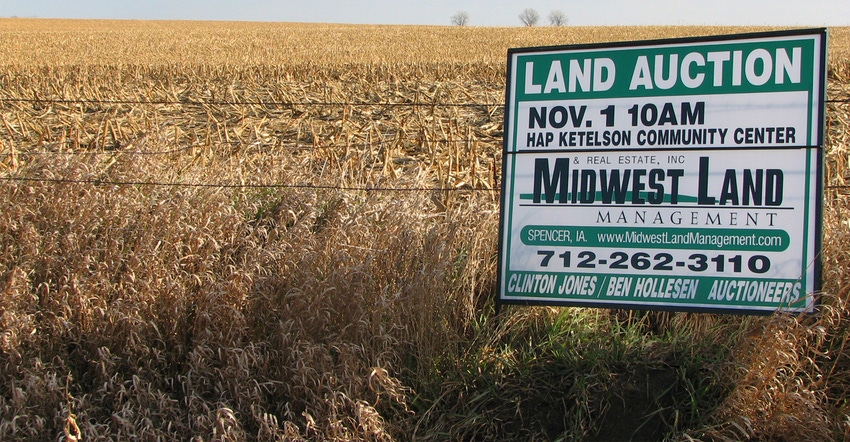July 27, 2017

Farmland is the most significant asset for many farms. Its strength is critical to maintain a strong equity position for farmers and robust collateral for lenders in this current ag economy downturn. It’s a bit unclear to project where Iowa and U.S. land values are headed and the signals are somewhat conflicting.
Iowa State University’s Land Value Survey shows farmland has been declining three years in a row since its November 2013 peak, the first time a three-year decline has occurred since the 1980s. Recently, several sources suggest the “waning” of the Iowa farmland market has stopped. The Federal Reserve Bank of Chicago reported a 2% and 5% increase in farmland values for Iowa and Wisconsin, respectively, from April 2016 to April 2017, the first year-over-year increase for Iowa since third quarter 2013. The Realtor’s Land Institute reported a 0.9% rise in Iowa cropland values from September 2016 to March 2017.
“While it’s tempting to jump to the conclusion that after several years of falling, the ag economy and land market has turned around, I caution any determination of the comeback story of Iowa land values for now,” says ISU Extension economist Wendong Zhang. “Given the continuous declines in nearby states’ land values with similar crop and livestock market fundamentals, and growing pressure from higher interest rates, the direction of land values remains fairly unclear.”
Reasons for cautious optimism
There are legitimate reasons for optimism in the farmland market. ISU cost of production estimates for 2017 show after more than three years of operating loss, Iowa farmers, on average, will have breakeven crop production for both corn and soybeans. Lower production costs bring cautious optimism. Despite the Federal Reserve’s recent moves to raise interest rates, rates generally are still at very low levels, allowing the possibility of debt restructuring for troubled producers. Also, many landowners are holding onto their land, and the limited supply for sale has buoyed land values.
“While there’s recent improvement in ag profitability, there are several factors preventing me from being too optimistic,” says Zhang. USDA is forecasting U.S. net farm income to decline by 8.7% to $62.3 billion, the fourth consecutive year of declines after reaching a record high in 2013, he notes.
Overall, crop prices and margins are improving but are still at fragile breakeven levels. Also, the Fed has raised interest rates three times over the last 12 months, and is expected to continue a gradual upward adjustment in months ahead. Both will continue to put down-pressure on land markets near term. A limited farmland supply is elevating prices of parcels sold at auctions, especially given the land market is typically a thin market with few transactions and even less available to non-related parties. “Looking ahead, the probability of a replay of the 1980s farm crisis remains low, but I also wouldn’t expect a land market comeback already,” says Zhang.
Source: Iowa State University
You May Also Like




